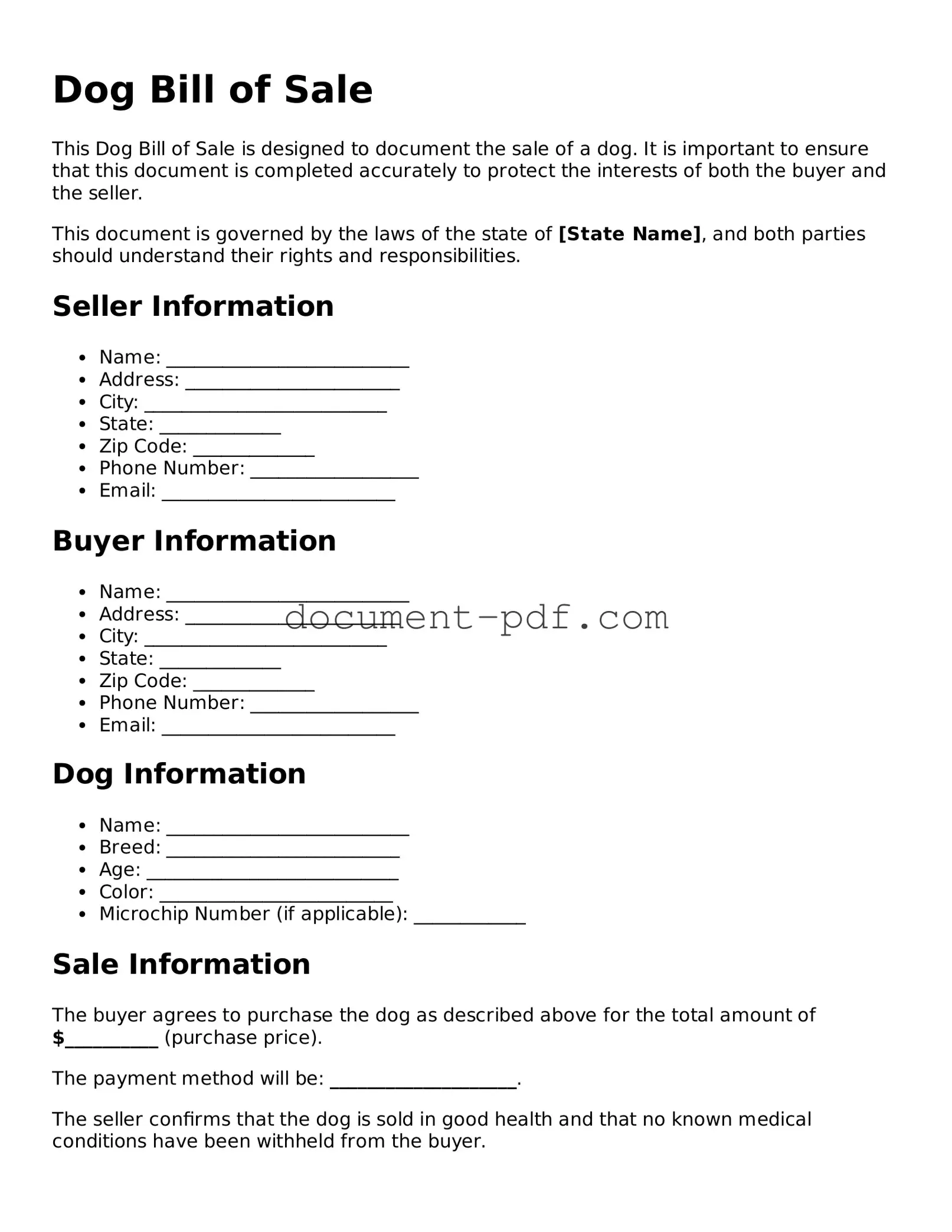Dog Bill of Sale
This Dog Bill of Sale is designed to document the sale of a dog. It is important to ensure that this document is completed accurately to protect the interests of both the buyer and the seller.
This document is governed by the laws of the state of [State Name], and both parties should understand their rights and responsibilities.
Seller Information
- Name: __________________________
- Address: _______________________
- City: __________________________
- State: _____________
- Zip Code: _____________
- Phone Number: __________________
- Email: _________________________
Buyer Information
- Name: __________________________
- Address: _______________________
- City: __________________________
- State: _____________
- Zip Code: _____________
- Phone Number: __________________
- Email: _________________________
Dog Information
- Name: __________________________
- Breed: _________________________
- Age: ___________________________
- Color: _________________________
- Microchip Number (if applicable): ____________
Sale Information
The buyer agrees to purchase the dog as described above for the total amount of $__________ (purchase price).
The payment method will be: ____________________.
The seller confirms that the dog is sold in good health and that no known medical conditions have been withheld from the buyer.
Agreement
By signing below, both parties agree to the sale of the dog as described in this Dog Bill of Sale.
- Seller Signature: _______________________ Date: _______________
- Buyer Signature: _______________________ Date: _______________
This document serves as a record of the transaction and should be retained by both parties for their records.
